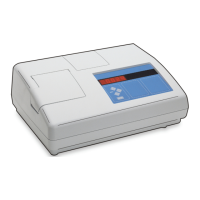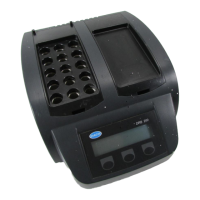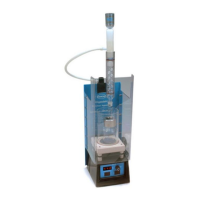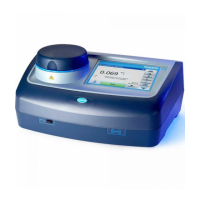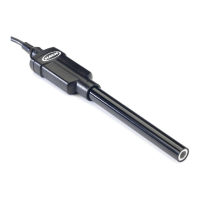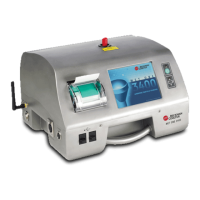24
SECTION 2, continued
2.3.5.2 Addition of Surfactant
Limit the use of surfactants (surface-action agents) to severe problems when other
degassing techniques prove ineffective. Surfactants change the surface tension of
the water causing the release of entrained gases. Hach Company recommends a
surfactant such as Triton X-100 (a Rohm and Haas Product, Hach Cat. No.
14096-32) or equivalent. Add one drop of Triton X-100 in the sample cell prior
to sample addition.
Note: Any turbidity contributed by
the addition of surfactant is
negligible.
This technique is particularly effective when water is supersaturated with air.
Changing the surface tension may accelerate settling of turbidity-causing
particles. Mix the sample well, and measure as soon as possible. Do not mix too
vigorously because the surfactant may begin to foam. Rinse sample cells
thoroughly between measurements to prevent accumulation of residual surfactant
in the cells.
2.3.5.3 Using an Ultrasonic Bath
An ultrasonic bath (Cat. No. 24895-00 or equivalent) is effective in removing gas
bubbles on most samples, especially on viscous liquids . However, the ultrasonic
waves also may alter the characteristics of the turbidity-causing particulates.
Turbidity is dependent on the size, shape, composition, and refractive index of the
suspended particles. Excess application of ultrasound may alter particle size and
shape, and thus change the turbidity. In some instances use of ultrasound may
compound the bubble removal task by fracturing gas bubbles, thus making
degassing more difficult. Use the following ultrasonic bath procedure.
1. Fill a clean sample cell with sample. Leave the cell uncapped.
2. Immerse the cell (
1
/
2
to
2
/
3
immersed) in an ultrasonic bath, and allow it to
stand until visible bubbles are expelled.
3. Remove the cell and install the cap. Thoroughly dry the cell, and apply a film
of silicone oil.
Note: The time necessary to expel bubbles may vary from a few seconds to a minute or
more. Follow this simple procedure to avoid excessive application of ultrasound. First,
apply ultrasound for a short period of time, and again measure turbidity. Continue for
several repetitions noting the treatment time and turbidity readings. If turbidity begins
to increase instead of decrease, the ultrasound waves probably have started to alter
the suspended particles. Note the treatment time preceding the turbidity increase, and
record it as the maximum time limit for ultrasonic treatment.
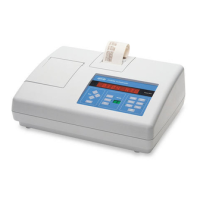
